HOME | ABOUT US | MEDIA KIT | CONTACT US | INQUIRE
HOME | ABOUT US | MEDIA KIT | CONTACT US | INQUIRE
PUBLISHED FEBRUARY 2024
You do something long enough, and you begin to form new perspectives. Take our Heroes in Healthcare, for instance.
Ingram’s introduced this feature 21 years ago this month as part of its commitment to covering health care in the Kansas City region, but through a bit of a different lens: Beyond the bottom lines, employment trends and aspects of care that interface with business HR departments—the stuff of periodic journalism—there were real people delivering that care. They deserved to be recognized for their contribution to the superior quality of life here.
So … what’s the new perspective? Well, we kicked things off back then by saying the program’s goal was to “recognize the ordinary people performing extraordinary service in their given health-care field.” Two decades years later, this seems like a good time to ’fess up,’ we might have been a tad off-point with that description: There’s nothing ordinary about these people. Not the 400-plus who have been spotlighted since 2004, nor the 21 we bring to you this year.
Unlike our other recognition programs, which tend to focus on organizational achievement or exceptional individual leadership in the C-Suites, Heroes in Healthcare takes an enterprise-wide view of what’s driving high-quality care. It starts with the administration ranks but pivots to include professional staff members with academic certification in a health-care specialty; nursing, from RN to NP levels; auxiliary staff members who support hospital operations through tasks like infection control, laundry or food service; volunteers and their invaluable contribution of time and talent; and a special category for lifetime service, irrespective of job description.
Bringing their individual stories to our readership over the past two decades has been more than merely part of the job description for us—it’s been a privilege. Our thanks, then, to all who have been recognized for sharing their stories with us and with our readers, to the nominees who brought those individuals to our attention, and to the health-care organizations with the institutional foresight to assemble such top-shelf workforces.
Were this a toast, we might conclude with this: “To your good health, Kansas City.”
Administration
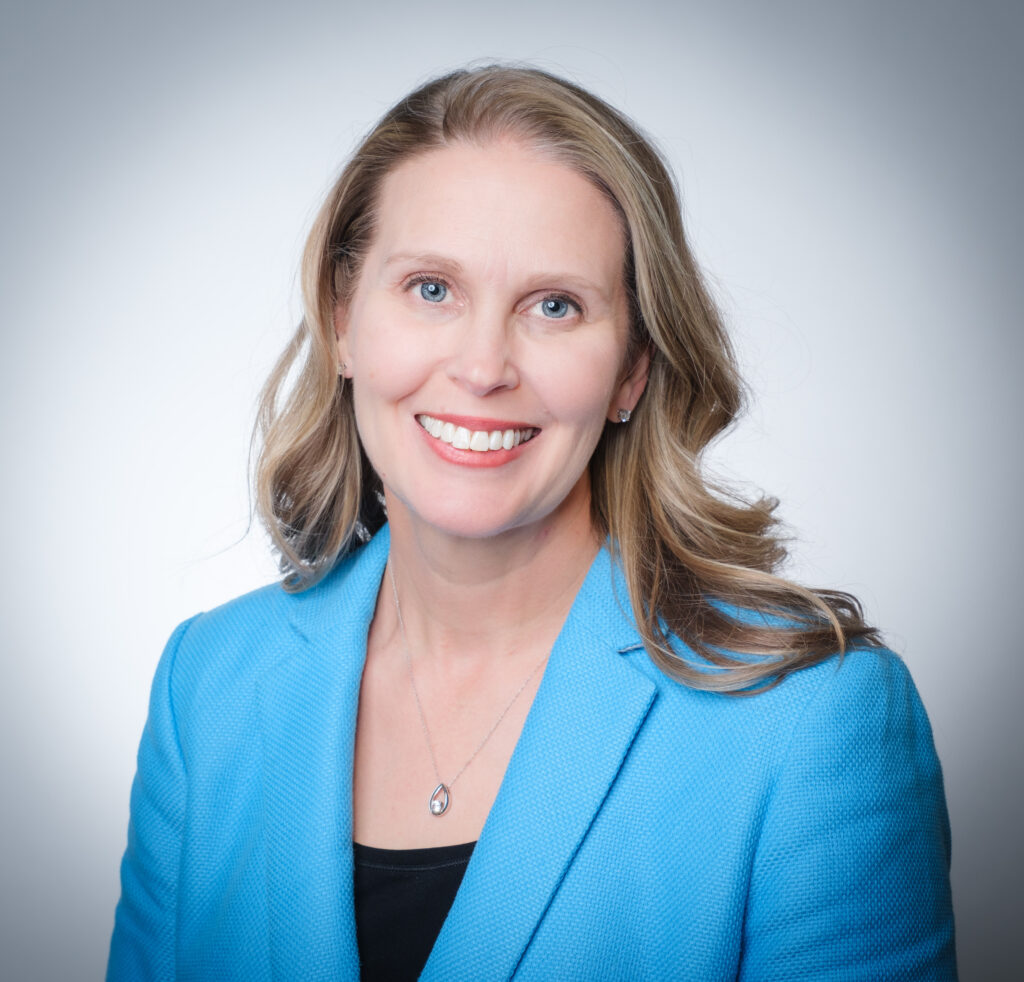 Tracy O’Rourke, Stormont Vail Health
Tracy O’Rourke, Stormont Vail Health
Each year, Topeka’s Stormont Vail Hospital admits roughly 21,000 patients, and from a distance, Tracy O’Rourke gets to impact every one of those lives. “And hopefully,” she says, “to help people have healthier lives and great patient experiences in our hospitals and clinics.” Over the past decade, she’s done that as chief strategy officer, chief administrative officer and most recently, chief operating officer for an enterprise with more than $2.7 billion in annual revenue. An enterprise-wide perspective, she says, has given her “real appreciation for all of the clinical team members at Stormont Vail Health. … While I’m not providing direct patient care, I’ve always viewed my role as an integral part of the team.” Being able to stand with the care team and remove barriers, to invest in the facilities, technologies and programs needed to achieve great patient care, and to be an advocate and cheerleader to those at the patient’s side, she says, fulfills and inspires her. “I also love the challenge of finding new and innovative ways to bring more comprehensive health services to our communities and region.” A native of Independence, Mo., she earned a biology degree at Mizzou, but quickly followed the administrative side of health-care delivery, earning her master’s in health administration at the same time she was nailing down an MBA in Columbia. Her career started with EY in St. Louis, and tracked through health systems and non-profit work in Missouri before she came to Topeka in 2015. As COO, her role has expanded to oversee operations across the system. “This has been an exciting time to lead the organization, because we are able to develop standardized work processes and efficiencies at the system level,” O’Rourke says. Thus, “I’m able to work with an amazing group of leaders to translate our strategic plan into action and results through our integrated operations.”
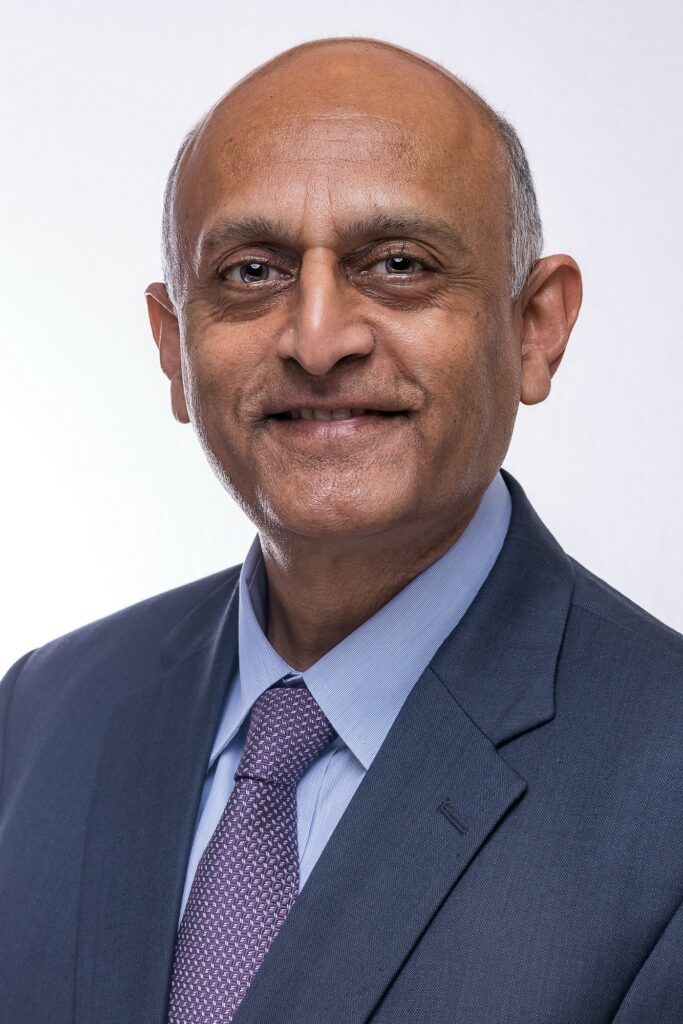 Naimish Patel, Swope Health Services
Naimish Patel, Swope Health Services
It might be harder to find a global perspective on health care than Naimish Patel brings to hiss duties as chief financial officer for Swope Health Services. Born in Kenya, he came to America to further his education, improve his opportunities and rejoin family members who had made their way here. “Originally, I wanted to be in the medical field in some capacity,” he says. “I also had a strong inclination for numbers and business instincts. With my background and potential for business opportunities, I decided to pursue college in finance and accounting.” That led him to a role as an insurance specialist for a property and casualty firm in Kenya for several years. “After coming to the U.S., Swope has been the only place where my entire career has evolved,” he said, and the clinic has become like a home to him. “Greater good and some way to impact health and wellness for individuals we serve at Swope have been big motivating factors for me,” Patel says. “Along with that, the team that I get to interact with and the team that supports me have been phenomenal. Finally, leaders that I have worked with over the years have been great mentors and I am thankful for their support and guidance.” Working in a health setting has some similarities to any other business, but not entirely. Of the similarities, “the largest challenge is to recruit, train and retain qualified associates,” he says. And the differences? “Technology-wise, we have to embrace and adopt evolving technologies such as artificial intelligence and continue to train associates for the use of new tools,” he says. He derives satisfaction, he says, “from knowing and observing the mission being fulfilled and indirectly positively impacting close to 50,000 patients we serve” each year. A certified public accountant with an MBA from UMKC, he oversees all budgeting, strategic financial planning and business decision support analysis for Swope Health.
 Kim Megow, HCA Midwest Health
Kim Megow, HCA Midwest Health
Decades later, the memory of that baby boy is fresh in the mind of Kim Megow. When she treated him at birth, he had a life-threatening condition, with a poor prognosis; his family, in fact, had been told the boy wouldn’t survive. “He did, however, survive and is now a father to his own young son,” Megow says. “I have been connected with his parents and extended family for all of these years, and every year on his birthday, I get a message from his mother, thanking me for caring for him. I never tire of those messages, as they always serve to remind me, “that’s why I do what I do.” A pediatrician by training, Megow came to a fork in her career path that called her to administrative duties, and she has followed that to Kansas City, as chief medical officer for HCA Midwest Health and its seven area hospitals and medical centers. Across that span, she has lived out two passions. “Practicing medicine and now working in a health-care administrative role is what I was meant to do,” Megow says. Her trek began with a degree in biology, summa cum laude, from Valdosta State College in her native Georgia, and her M.D. came from the Medical College of Georgia, focusing on pediatrics. She later knocked out a 4.0 GPA to earn her MBA from UMass Amherst in Massachusetts. Encouraged by her high-school biology teacher, she zeroed in on becoming a doctor while still in ninth grade, and by the time she’d finished med-school rotations, she was hooked. “While I enjoyed delivering babies, I was drawn to going with the babies to the nursery to provide care for the babies,” she says. “Additionally, I was attracted to the long-term relationships with families of my patients, which proved to be extremely rewarding over the course of the years I was in clinical practice.” During her two decades in private practice, Megow had the opportunity to serve in various medical staff leadership roles and also to pursue her business degree. “The administrative role has offered me the incredible opportunity to impact more lives than I was able to impact in my small private practice and has been a very fulfilling part of my career in medicine,” says Megow, who holds dual-track recognition from the American Board of Pediatrics and as a Fellow in the American College of Healthcare Executives.
Auxiliary Staff
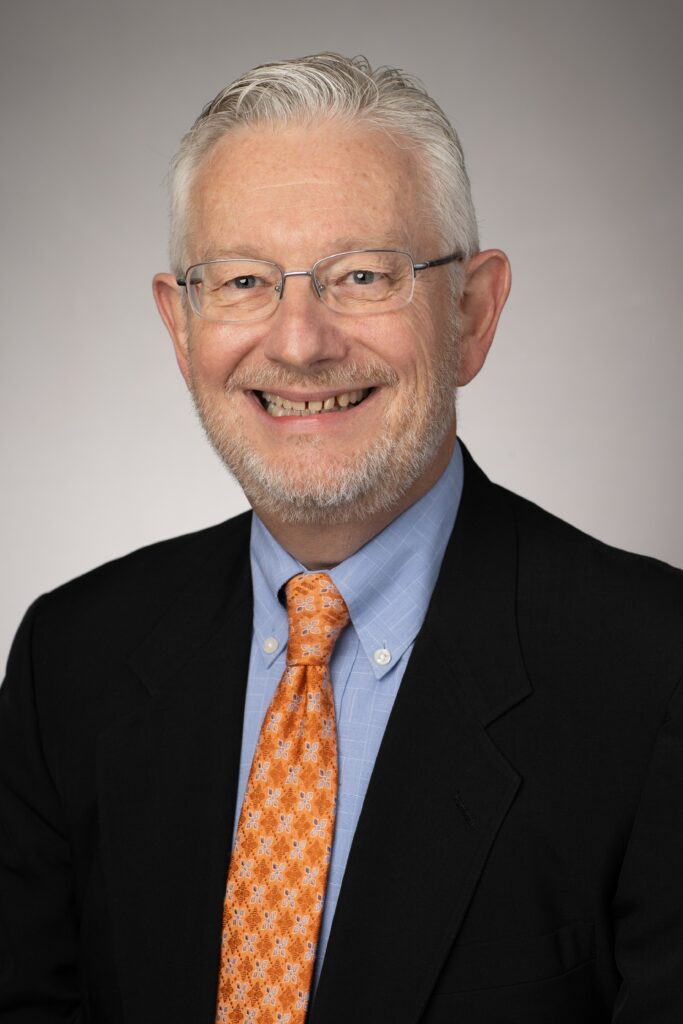 Terry Engling, Research Medical Center
Terry Engling, Research Medical Center
Passion, dedication, and caring have always been hallmarks of Heroes in Healthcare. Terry Engling demonstrates daily that those qualities don’t stop at the patient’s bedside. As administrative director for guest services and community outreach at Research Medical Center, he oversees multiple support services departments, including Food and Nutrition, Environmental Services, Transportation, Communications, and Volunteer Services, so he has plenty to be proud of when he says that “the daily work of our support services team is fundamental to great patient care.” At Research, he’s a key figure for HCA Health Midwest’s flagship hospital, which admits roughly 19,000 patients a year. He’s been there since 2013, having previously worked in other hospital settings on a career path that started by chance. Just out of college, he was recovering from a lengthy illness and preparing to find work when his pastor referred him to a fellow church member who worked for a third-party service provider for hospitals. “I didn’t know anything about that line of work, but, through God’s providence, I went through a number of interviews and was hired as a manager,” Engling says. “Working with support department teams was something that I dearly loved and still do.” The common denominator among the varied units he directs, he says, “is that all of the areas serve patients and their families, in some fashion or another. The rallying point in our HCA Research Medical Center culture is that our Mission Statement is that ‘Above all else, we are committed to the care and improvement of human life.’” Facing the unrelenting need for workers in that space, the hospital says he has led several innovative programs to both find new employees and provide employment opportunities to area at-risk populations. In addition, he has overseen a refugee program to connect newcomers to America with jobs at Research, and his team has partnered with City Union Mission, providing work so people work their way out of homelessness—all among the reasons he’s a past winner of the Medical Staff Exceptional Service Award at Research.
 Laurie Pope, AdventHealth Shawnee Mission
Laurie Pope, AdventHealth Shawnee Mission
Health care is a team sport, which means you don’t always see the impact of your work on any given patient. But consider the math in the case of Laurie Pope, volunteer coordinator at AdventHealth Shawnee Mission: This spring marks 42 years there, 35 of which have been in her coordinator capacity. Over the course of a year, more than 400 of her volunteer charges contribute 75,000 hours of service to the medical center. That’s a lot of impact, seen or not. Her duties include overseeing the onboarding and coordination of hundreds of volunteers and accounting for those volunteer service hours. Hospital officials say her team has helped it save more than $2 million—money that can be put towards important renovations and medical services. “Volunteers play an important role in helping our patients feel whole,” Pope says. “It is rewarding to see a patient’s face light up when a volunteer takes time to visit or deliver a piece of mail or a flower arrangement, but it is equally rewarding to see our volunteers ease the burden for busy team members by filing, organizing Lost & Found items, or assembling patient packets.” Citing the wisdom of Solomon, she notes that “a cheerful heart is good medicine, and our volunteers deliver an extra dose wherever they go.” She started working there while on summer breaks from college, then came on board after graduation and held positions in administrative offices before the volunteer opportunity opened in 1989. “I’ve often asked myself: What motivates a volunteer to arrive at the hospital by 5:30 a.m. to greet patients coming in for procedures and walk with them to their destinations? Why would a volunteer donate fabric and talent to make walker bags for Home Care patients or eyeglasses cases for surgery patients she may never meet?” she muses. “Perhaps it’s because God has blessed each one with a caring heart and a desire to help fulfill our mission of Extending the Healing Ministry of Christ.”
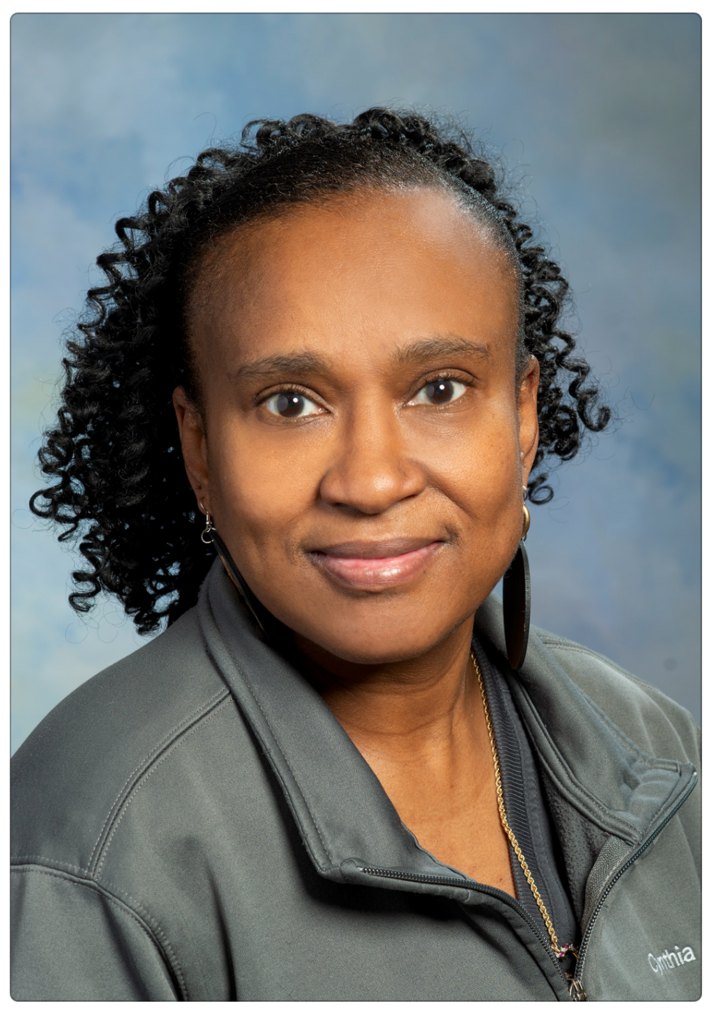 Cynthia Phillips, Saint Luke’s Hospital
Cynthia Phillips, Saint Luke’s Hospital
For the clinical team in a hospital pre-operative unit, the sights, sounds, and processes are matters of routine. To patients steeling themselves for surgery or a hospital stay, none of it is routine—and in many cases, it may be overwhelming, if not merely frightening. In more than 20 years with Saint Luke’s as a certified nursing assistant, Cynthia Phillips has never lost sight of that patient perspective. “I enjoy pre-op because of the unique opportunity it provides,” she says. “I am the only CNA in the department, which allows me to create close-knit and trustful relationships with nurses, surgeons, and anesthesiologists. “I encounter every single surgical patient and am honored to develop that connection.” Phillips is a Kansas City native who was inspired to work in a healthcare setting by the example of her mother, a long-time home health nurse. “Through her, I realized how badly the world needs nursing aides—those who help both people and the nurses who care for them,” she says. Faith has never been far removed from the technical details of her pre-op duties, into which she routinely incorporates a prayer. Earlier in her career, when doing hospice care, she recalls, “I would hold the hand of every patient and pray for them before they passed. Those moments stick with you forever. Today, I continue to pray for every patient I touch daily.” As the first person to arrive in that unit and prep every room and chart for the day, she fully grasps the importance of her duties and the setting. “Pre-op is the last line of defense before the patient goes into surgery,” Phillips says. “We all work together to ensure that each patient is not only physically ready for their procedure but emotionally prepared as well. It is truly rewarding.” Those rewards keep her coming back for more. “First and foremost, I stay here for my patients; I love making those connections beyond what words can express,” she says.
Nursing
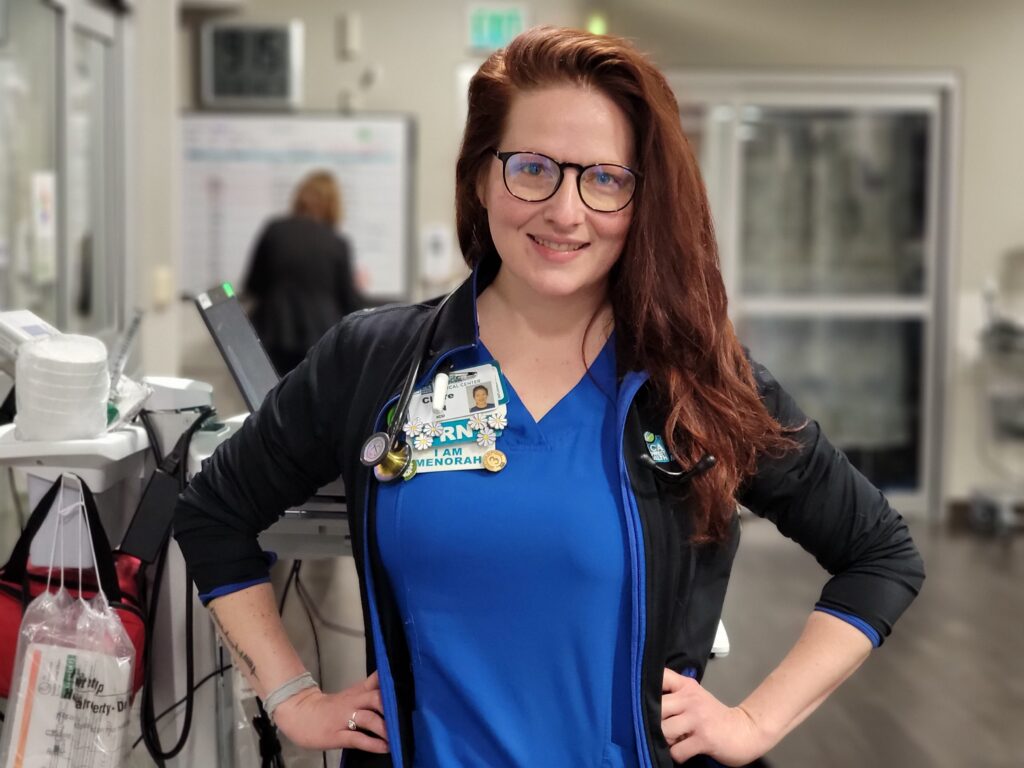 Claire Banholzer, Menorah Medical Center
Claire Banholzer, Menorah Medical Center
A metro area of 2.2 million people can be a small town when you’re an ICU nurse and the patient staring back at you is someone you know. In Claire Banholzer’s case, it was a doctor she knew well who was in critical care at Menorah, suffering from COVID-19. Hospital CEO Phil Butell said that in assembling that care team, “Claire was at the top of the selection, and when we notified her, she stated, ‘I will go to ANY length, any length for him—and all these patients to live. His work is not done. He has more patients to save.’ THAT is Claire.” But, he says, “it nearly broke her to witness such a personality come before us so sick, and it was a humbling experience for her.” Such experiences, Banholzer says, “teach you to not get to too emotionally involved with patients, but at the same time, I feel that the more emotionally involved you are, the more help you can give them and their family, because they see you care. And that is the only way to do this job—with your whole heart. I can’t count the number of times I’ve cried after a patient passed, or during the decision to switch goals of care, just to keep them comfortable.” Some in hospital settings are drawn to the neonatal ward and the routine celebration of new life. “We are often on the opposite end” in critical care,” Banholzer says. “It’s not always about saving lives, but helping them leave with dignity and pace. That’s a big job, not always easy to do. You have to do what’s best for the patient at end of day, and sometimes that’s helping let them go. But when we do have wins, they are big wins.” Caring for someone close even preceded her nursing education. “What pushed me in the direction to join health care was my father being diagnosed with colon cancer,” she says. “I helped take care of him after surgery, and in doing so, was able to have that influence on helping someone else. It was one of the best things in the world; he always called me his sunshine. My ‘why’ is to be a light in my patients’ darkness.”
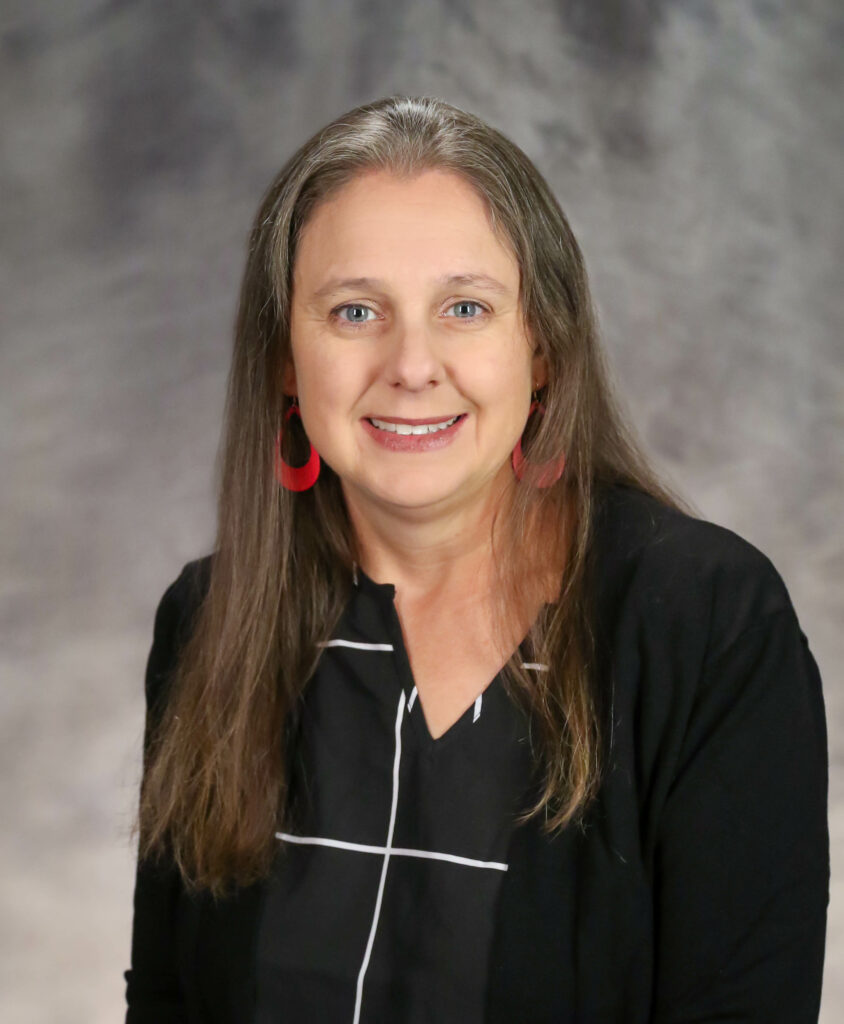 Mary Davis, North Kansas City Hospital
Mary Davis, North Kansas City Hospital
In matters of career, as with those of the heart, there is like, and there is love. Mary Davis liked the idea of becoming a teacher. She pursued her education degree, but late in the game, she started taking nursing courses through Graceland University, and found that love does indeed conquer all. “The more I go into nursing, the more I liked it. And it’s not that I didn’t like teaching, I just didn’t love it,” she says. “I loved coming to work and taking care of patients.” This Parkville native didn’t catch the nursing bug from her mother, who was also a nurse; instead she chanced into it for practical reasons: “I married young,” she says, “and needed a job that provided health insurance.” So she started working at the hospital transporting patients twice a week, enough to qualify for benefits. Before long, she realized she was hooked. “Being able to help somebody when they’re sick and can’t do it for themselves, teaching them the processes and watching them trying to make changes that benefit their health, their family—that’s really inspiring,” she says. She started as a surge nurse, worked in various lab roles, and since 2011 has been in nursing education, which helped close the circle on her initial career track. “When you teach people who are excited about what they’re learning, and it’s important to them, it’s fun watching a light bulb come on,” Davis says. And her work doesn’t stop when she walks out the hospital doors—in addition to multiple medical-mission trips to Jamaica, she works with non-profits here. “We think of the U.S. as a place with great access to health care, and it is if you have insurance. But health maintenance is impossible without it. Being able to provide that care to homeless veterans who may have the opportunity to go to the VA but for whatever reason choose not to, to be able to help someone save their foot from frostbite, right here in our streets and neighborhoods, probably defines my love of nursing.”
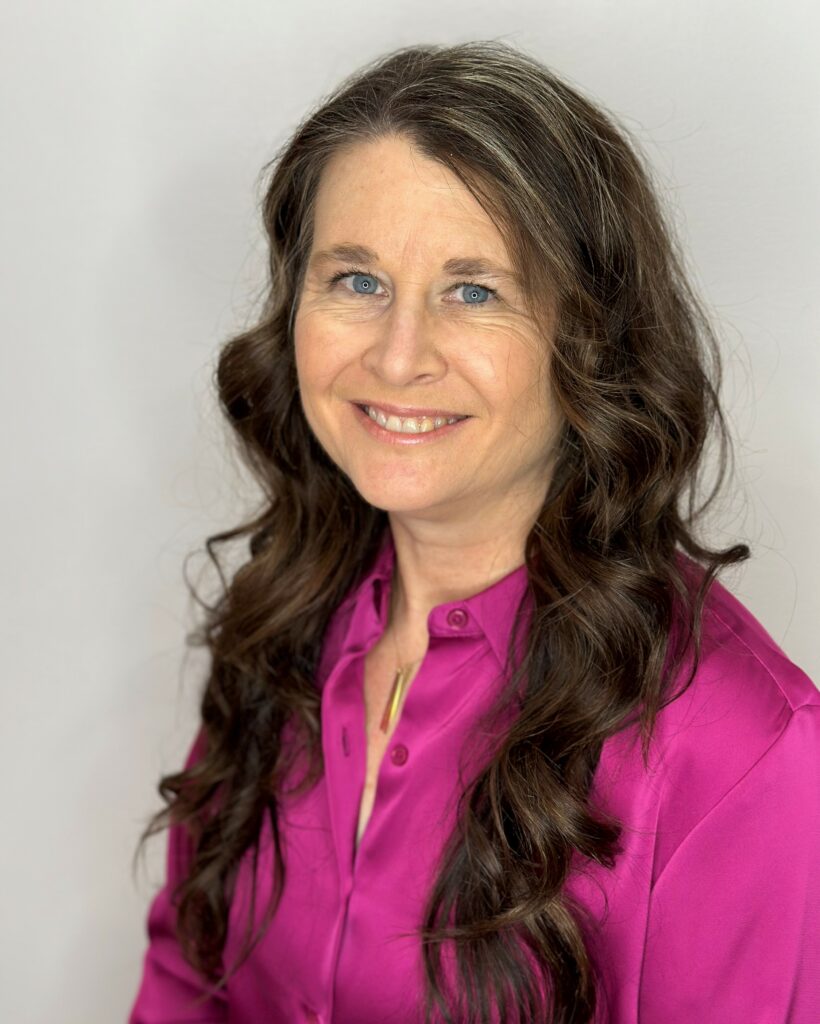 Wendi Dooley, Cass Regional Medical Center
Wendi Dooley, Cass Regional Medical Center
Picture this: An elderly woman is dying of cancer, and her young granddaughter decides to help. “I would put candy in pill bottle to give her her ‘medicine,’” recalls Wendi Dooley. It was brief foreshadowing of what would come to pass for Dooley, who came of age in Drexel, Mo., with other career tracks in mind. During her upper-class years in high school, she would attend the local vocational-technical school, exploring various occupations through its affiliation with the local hospital. “In all the departments in the hospital, I thought I wanted to become an accredited records technician,” she says, but when the time approached to begin that instruction, “I told my mom I didn’t want to do that. I said I wanted to be a nurse.” After earning her nursing degree, she assessed her options and decided to go local. “You become family when you work in a smaller hospital,” she says. She’s now the medical imaging nurse for Cass Regional, where she coordinates all of the hospital’s moderately invasive procedures for imaging, from the first call to schedule and prescreen the patient to the final follow-up call. She knows that many will undergo their procedures with apprehension. “I try to find something I have in common with them,” she says. “Because I have been here so long, 30-plus years, I’ve seen generational patients—grandparents, parents and children. Usually, I will know somebody they know, and I get them to talk about their grandkids, or their dogs—whatever they’re interested in. That can usually calm those patients down.” Being a dedicated point of contact for people also is important, she says. “That’s what they like about coming here as a small hospital,” Dooley says. “I tell them I’ll be the one that sees you, checks on how you’re doing, in the room with you and giving you a call afterwards. A lot of times, they come back for follow up, so they still see me—they know my name, and I know theirs. You get to know them as a person and not as a person who has lung cancer or some other disease.”
 Lori Beth Hamline, University Health
Lori Beth Hamline, University Health
“Patient persistence attaineth to all things.” Most people don’t go around quoting Teresa of Avila, but Lori Beth Hamline pulls that nugget out of history to explain what’s kept her in nursing for more than 40 years with University Health: “I still love my job,” she says. “In a labor market where the expectation is that people will change jobs every five years, I am an anomaly. I truly believe that you never achieve excellence if you’re constantly seeking novelty. It is a sincere desire to do the job well that keeps me committed to what I do.” Hamline is currently in the cardiology unit as inpatient coordinator. If surgery, heart failure or heart attack has brought you to UH, Hamline is the one who explains everything you need to know before you are discharged. An Independence native whose mother was also a nurse, Hamline earned her degree at William Jewell College and headed straight for what was then Truman Medical Center. She was eager to specialize in emergency nursing, and it had one of the country’s top ER programs. She started in the ICU ward—her time there covered the nearby Hyatt disaster in 1981—and she settled in with ER work. “After many years of bedside nursing, I chose cardiology because it was always an area that fascinated me,” Hamline says. “It is constantly evolving with new techniques, treatment modalities every year. My role, like my mother’s, is to help patients understand their disease process and how they can positively impact their own health outcomes through preventive measures.” It’s also appealing because it goes beyond the underlying pathology and medication, she says, to incorporate diet and exercise. “There is some agency for patients to take control of their own lives.” There is a beauty in the ordinary, she says, and “it is in the day-to-day interactions with patients that I find my motivation. Through having patients feel ‘seen’ and know that their concerns have been heard. In seeing them relax because they have a greater understanding of what is going on with them, and that they don’t feel alone in the process. As Mother Teresa said, ‘small things done with great love change the world.” I hope that in some small way, I have changed the world for the better.”
 Stacy Smith, The University of Kansas Hospital
Stacy Smith, The University of Kansas Hospital
What makes Stacy Smith a hero? Let us count the ways, say her supervisors. She meets the test for the influence she has had on the success of the neuroscience service line at the hospital, for the way she’s guided her team in building the largest adult ICU in the health system, and for neuroscience leadership in the community, promoting awareness of the signs of stroke and teaching people how to respond when someone near them is exhibiting any of those signs. An Indiana native raised in Illinois, she has worked at the hospital for more than 30 years. Smith was just 16 when she started going to the nursing center where her mother worked. “My Mom showed me how important it was to care for others like they were your own family and also how important it was to show up and do your best,” she says. “I knew how much her colleagues thought of her, but learned so much more after she passed away, when I started hearing from all those we worked with so long ago about how much regard they held for her as a nurse and as a person.” The nerd in her, Smith says, initially pulled her toward the mystery and intrigue of neuroscience. “I had a very early interest in critical care—back in 1987, it wasn’t as common for new graduates to move straight into the ICU, but I did and fell in love with combining scientific knowledge with empathetic care for those going through some really challenging illnesses.” She also spreads the gospel of awareness, prevention and early intervention outside the hospital. “I’ve been very active in both critical care and neuroscience organizations my whole career,” as well as with community health fairs and non-profit fund-raisers. “If I can lead one person to helpful information or treatments, then I feel like that is a success,” she says. “I’m often also helping people with access to health care—many people reach out to me looking for help with these scary and complex neuroscience things and I am fortunate to know a lot of great providers and have connections to help them get in to see a specialist.”
 Lauren Wolf, Aetna Better of Kansas
Lauren Wolf, Aetna Better of Kansas
How does one decide when you hear the call from two career paths? For Lauren Wolf, it was simple: Do both. She’s the program integrity manager for Aetna Better of Kansas, overseeing health-plan activities that include regulatory reporting, coordinating interdepartmental program integrity initiatives, and identifying services at risk for fraud, waste and abuse. A nurse by training, it’s the ideal way to extend care into an instructional dynamic. “I have always had a deep desire to help others,” Wolf says. “When I entered college, nursing and education were both effortless choices. Thankfully, I’m able to combine my passion for health care and education when I provide presentations to health-care providers and law enforcement at local and national organizations and future nurses at local colleges/universities.” Still, she says, “I would have never imagined my nursing career taking me where I am today. Nursing is such an amazing field because the opportunities are endless. My nursing background and knowledge absolutely set the stage for all my professional endeavors.” Having practiced nursing at the bedside, she understands the struggles and stressors that providers face. And in working alongside law enforcement and prosecutors, she says, “I also understand the integral components involved within health-care crimes. This is a unique combination and one that I truly love.” That penchant for caring also shows up outside the workplace, volunteering to give vaccines for the health department, or substitute-teaching at her children’s school. Hers is truly a unique perspective within the regional health-care realm. “I can remember many patients from my early bedside nursing days who shaped the person and nurse I am today,” Wolf says. “Similarly, I can remember many victims of health-care crimes whose cases I worked and whose perpetrators are now behind bars. Every patient deserves quality care and I’m passionate about advocating for that.”
Professional Services
 Samaneh T. Wilkinson, The University of Kansas Hospital
Samaneh T. Wilkinson, The University of Kansas Hospital
Ground traffic control isn’t in the formal job description for a senior pharmacy manager at the region’s biggest hospital, but when a patient’s life may hang in the balance, Samaneh Wilkinson answers the call. Consider the case of a patient with a life-threatening liver condition who needed an expensive medication—immediately. Her department had just expanded to hepatology services, requiring extensive review and authorization from insurers before dispensing drugs. “We received insurance approval very late in the day on Friday,” Wilkinson recalls. “After talking with the team and the patient’s family, we determined that we would meet the family halfway to drop off the medication.” That meant a staff driving three hours to deliver the prescription, jump-starting treatment two critical days sooner. “Being a leader over an area that supports patients in such a way validated my decision to pursue management,” says Wilkinson. “My leadership style is very situational and I enjoy the autonomy that my role offers to make decisions that impact our patients in such a positive way.” She was raised in Johnson County and the health-care influence started at home—her mother was a nurse. “I chose pharmacy because I knew there were many different aspects of care I could provide as a pharmacist and that was very appealing to me,” Wilkinson says. She earned both a master’s and her PharmD to pursue her passion for patient service, but leadership was calling her, as well. “I pursued a leadership residency and my master’s in Hospital Pharmacy because I wanted to improve processes for staff and patients,” she said. “Leaders have the chance to mentor and develop other pharmacists and pharmacy staff, fostering their professional growth and cultivating a culture of excellence and continuous learning within the organization; that was very appealing to me.”
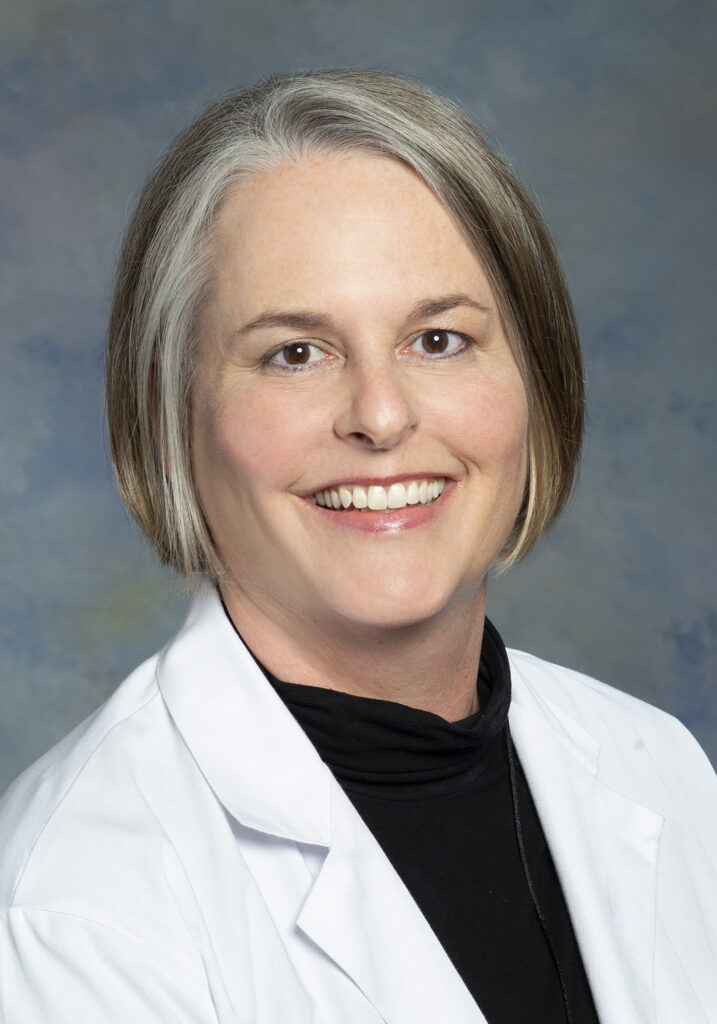 Marsha Weaver, Saint Luke’s Health System
Marsha Weaver, Saint Luke’s Health System
For two decades, Marsha Weaver impacted patients’ health one on one as a physician. Now, doing it at population level is what gets her out of bed every day. “Throughout my career in medicine, I have always had a deep interest in how we can move upstream to improve the health of our communities,” says Weaver, a physician who calls her pivot to population health was “a natural progression in my career” when she saw how social factors impact the health of individuals. “Population health allows me to focus with a wide panoramic lens on the health of an entire population of patients and then zoom back in to see how we can provide whole person care at an individual patient level. We know that about 80 percent of what impacts a person’s health occurs outside of the medical exam room.” Born in Wichita and educated at K-State for undergrad and KU for her M.D., she was drawn to the field as a teenager, building on a passion for science and personal experience as a teen when her great-grandfather was hospitalized. “I stayed by his side day and night to help make sure he was comfortable and advocated for his care,” she recalls. “That experience solidified my decision to pursue a career in medicine.” Another formative teen influence was reading “Horse and Buggy Doctor” by Arthur Hertzler, a doctor who practiced in Halstead, Kan. “The narrative of continuity of care and long-term relationships with patients resonated with me,” Weaver says. “My weekly time spent in clinical practice is less with my new role in Population Health, but during my peak clinical practice time, my greatest joy was the relationships I built with patients over a 20-year time span.” Now, she’s on a cutting edge where medicine meets tech. “Data analytics helps us to be able to visualize the quality of care we are performing and take action on these critical issues,” Weaver says. “The ability to integrate this data visualization into our electronic health system is a game-changer.”
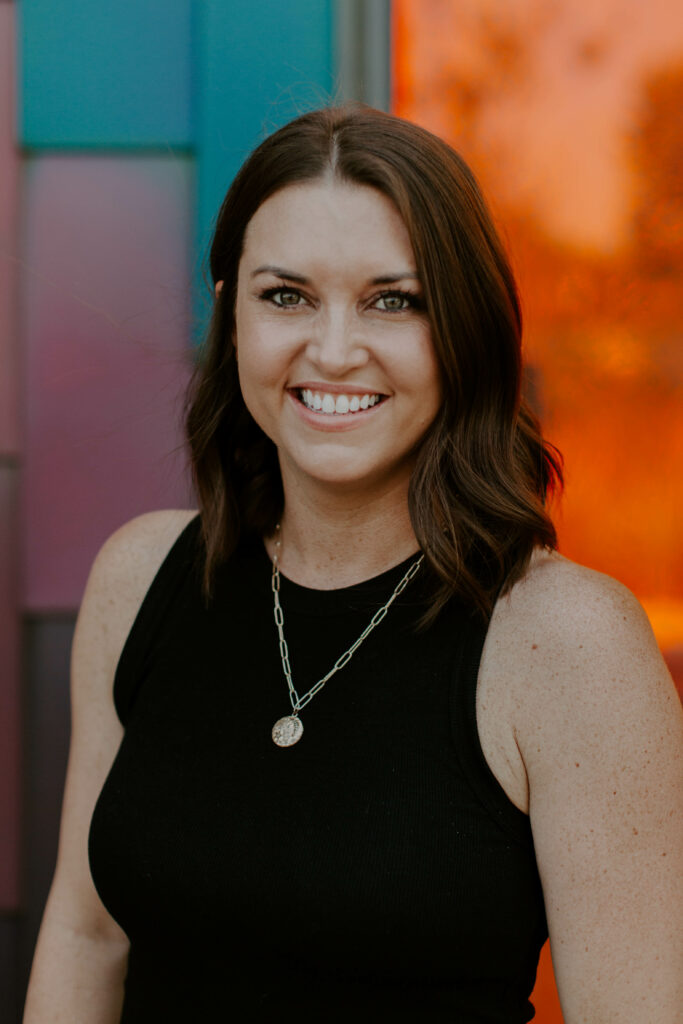 Kelly Reardon, PlayAbilities for Sensational Kids
Kelly Reardon, PlayAbilities for Sensational Kids
Even before she was a mother herself, Kelly Reardon saw the service gaps in therapeutic programs for young children. That’s why she started Playabilities, inspired by the heart-breaking example of a close friend whose daughter had a developmental delay. “I knew that our community needed more places that could provide individualized relationship-driven pediatric therapy services and become a family’s village,” says Reardon, an occupational therapist by training. “I was working at another medical rehabilitation facility at the time, and I left to start my own private practice, Playabilities. Here, I was able to create an individualized therapy plan that supported this little girl.” And in doing so, she laid the foundation for a much more personal experience: With her daughter, Lily, who was born nearly two months’ prematurely in 2017. Since its 2013 founding, Playabilities has helped more than 2,000 children and their families, quickly outgrowing its initial one-room therapy clinic and expanding into both Leawood and Prairie Village with its “Play Way” method of infusing child’s play into therapy. “I knew that our community needed more places that could provide individualized, relationship-driven pediatric therapy services and become a family’s village,” Reardon says. A Kansas City native, she was only in sixth grade when a relative urged her to consider an OT career. “She was watching me play with another relative of mine who has autism while she presented the idea to me. She told me that OTs help kids learn how to do everyday activities that may be more challenging to them for one reason or another.” With her work now, “I have a passion for helping children see their strengths, overcome obstacles, and reach their optimal potential,” she says. “I love the innocence of children, and their joy of life is contagious!” After having kids of her own, she says, and experiencing the kinds of heartaches she has seen in other parents, “that inspiration is only magnified. I know how important it is for a child and their family to have a strong village of support to lean on. No matter how big or small the obstacle is, we all benefit from individualized and relationship-driven support as we navigate through the journey of raising kids.”
Volunteers
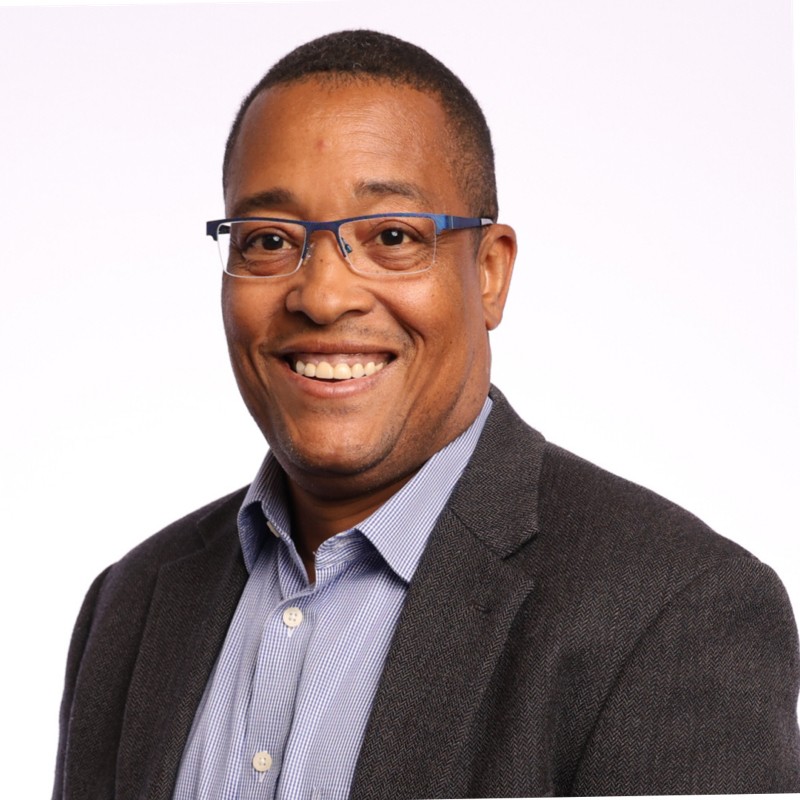 Kevin Wake, University Health
Kevin Wake, University Health
For Kevin Wake, the call to serve as a volunteer at University Health isn’t merely good citizenship: It’s personal. Diagnosed with sickle cell disease before his first birthday, Wake has spent his life coping with pain, infection, and various complications of the blood disease that claimed both of his brothers in their youth. His mother, a nurse who disregarded the counsel of a pediatrician who said she needn’t prepare him for college because he likely wouldn’t live to see it, never gave up on him. Not only did he earn a degree in human biology, he spent decades in the medical sales field before complications from his condition compelled him to step aside. But he wasn’t done: Today, he is the president of the regional Sickle Cell Association and is a passionate force behind University Health’s Patient and Family Advocacy Council, which provides leaders there with patient perspective about care. He signed on, he says, because he’d been treated at UH for years and learned that the council was being created in 2019. “My name was forwarded as a possible patient who would be interested in the PFAC,” he recalls. At the council’s inaugural meeting, “I was impressed by all of the patients and staff members present and what their mission was going to be in elevating patient voice within the hospital. The group’s motto really spoke to me: ‘Nothing About Me Without Me.’” Since then, he’s worked to ensure better communication between patients and providers, advocating for patients, and offering feedback to improve care levels. Through the clinic, he was invited to a board meeting of the Uriel E. Owens Sickle Cell Disease Association of the Midwest. “I reluctantly attended a meeting and was inspired by their work—in my entire life, I never knew such an organization existed,” says Wake, now that group’s president. “I had found a new way to impact patients’ lives, patients that I had a personal connection with.”
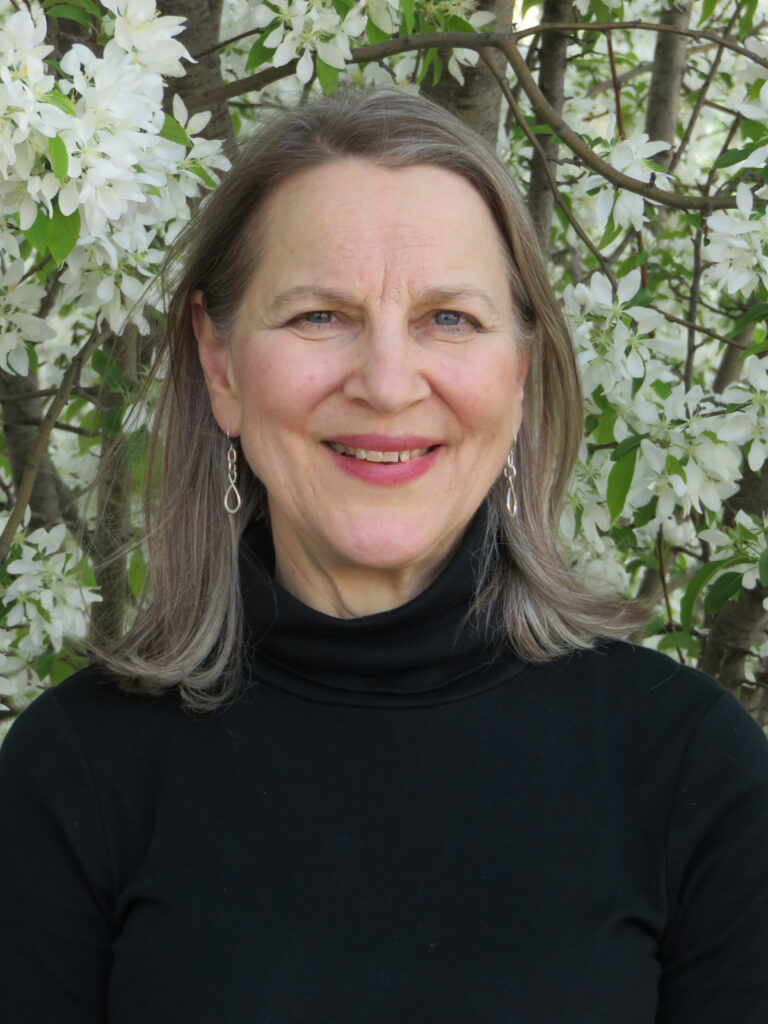 Ann Zimmerman, AdventHealth Shawnee Mission
Ann Zimmerman, AdventHealth Shawnee Mission
If you’re routinely out before dawn on the streets around AdventHealth Shawnee Mission, you may have wondered who in the world is that woman on the bike every day. Well, here’s your answer: It’s Ann Zimmerman, on her way to another volunteer shift at the medical center in Merriam. “I bike in every day at 5:30,” she beams. “As long as the streets are dry and it’s not too cold, about four miles each way.” There, she’ll hold court, usually at the main entrance, helping direct those coming in for outpatient procedures, in for surgery, or looking for a relative who might be under care there. “It gives me a sense of pride,” she says. “I like helping people, whether that’s the staff or the people that come in the door. With the staff, sometimes I get to the surgery center and help get the charts ready for the surgery. When patients come in, I make sure they have their driver’s license and insurance cards, tell them to have a seat, and tell them that someone will be with them shortly. It helps the staff get ready to take the next patient on so they’re not waiting around. Whatever they want us to do, I’m always willing to help.” Zimmerman grew up in an Iowa farming community and had plenty to do before school and after, feeding cattle, tending the chickens, helping with the harvest, or just cleaning up—a fair amount of which is required in a family with 14 children. So hard work was never out of the question. After high school, she settled on nursing school and worked in long-term care for 27 years in Iowa before making her way to the Kansas City area. But she wasn’t done yet. “I always wanted to volunteer, so I called up Peggy Todd at the hospital, and she asked me to come in, and we did that interview; she said she felt like she’d known me her whole life. We sat for an hour or two just talking; it was wonderful.” Hired on the spot, she says, “It was a blessing the day I walked in that door in 2016.”
 Leonard Pittala, The University of Kansas Hospital
Leonard Pittala, The University of Kansas Hospital
When he’s making his rounds as a volunteer at the city’s biggest medical center, nobody ever accuses Leonard Pittala of dogging it. Wait: That’s not exactly right. With his therapy dog tagging along, nobody accuses him of not dogging it. After wrapping up a 40-year health-care career of his own as a pediatrician with North Kansas City Hospital, Pittala was looking for a way to remain engaged; he connected with the non-profit Pets for Life and soon added the medical center to his rounds with Buddy, a 4-year-old Sheepadoodle. In addition to the hospital, Pittala says, “We spend half of our time in senior living facilities, about half a dozen on a regular basis. We have a great time; the staff loves Buddy—they think he’s their dog. You don’t realize how much people appreciate a connection with a pet until you do it.” Bringing a physician’s perspective to the duties has been illuminating. “It has been an eye-opener to be more sensitive not just to the medical issue, the XYZ of disease, but understanding the feelings and emotions of patients, trying to be empathetic, and trying to pass that over to the med-school students.” Pittala is a Kansas City native who, before college, was in a medical unit with the Army Reserves during the Vietnam era, and was encouraged to pursue a medical career. Once he did, he said, “pediatrics came easy,” as does his time with Buddy while visiting patients and staff. Pittala can tell stories about how Buddy has brightened the day of patients dealing with serious conditions—often moving them to tears—or elevated the moods of stressed staff members. His is an example of what retirees can achieve when work ends, but there’s still gas in the tank. “Oh, my goodness, it’s such a positive thing,” Pittala says. “No 1, you’ve been around so many years, believe it or not, you know a lot. A lot of people lose confidence because they get away from their regular career. Get back on track: You have a lot to offer the community, people appreciate it, and it helps your well-being. It’s been shown over and over that when people get involved socially, move out of that chair, and use their knowledge accumulated over the years, it’s beneficial for their overall health—for the elderly, especially. Everyone has something to offer.”
Lifetime Service
 Charles Rhoades, Kansas City Orthopedic Alliance
Charles Rhoades, Kansas City Orthopedic Alliance
This is a love story: “I truly loved all but one of my medical school rotations; I could have been happy in any one of many specialties,” says Charles Rhoades. Late in his final year of medical school, he was exposed to orthopedics. “I found I loved orthopedics for many reasons: I loved surgical procedures, I loved treating young and old patients, and I really loved the ability to treat patients and have long-term follow-up of my patients and their families,” he says. Thrust into double duty as the chief executive for his medical practice early in his career, he spent 36 years building one of this region’s most prominent orthopedics specialists. “I entered medical administration suddenly and sadly,” he says, recalling how the ski-trip death of the practice administrator had thrust him into that role for a small firm with three surgeons. He took on many of those duties, became president of the group, and held that position for 24 years, treating his own patients and growing the practice. “The two domains,” he says, “were like interesting chess games with different players.” A Johnson County native who went to med school at KU, he led the 1998 creation of the Kansas City Orthopaedic Institute, drawing on additional executive skills acquired during a nine-week stint at Harvard Business School. He then led its reorganization into KCOI, where he was CEO until the start of this year, into its new enhanced affiliation with the Kansas City Orthopedic Alliance. One of his most vivid memories in practice involved a man on whom he had performed a spinal fusion two decades earlier. The patient so badly wanted to see Rhoades again, he told a little white lie about his condition to get in. “He apologized for sneaking into my sports/upper extremity clinic under false pretenses,” Rhoades says, but “in tears, he said he wanted to see me 20 years from the day I fused his fractured spine. In his mind, he came to the hospital paralyzed and walked out. He made the appointment to thank me in person. … Needless to say, we both were in tears at the end of his visit. I cannot imagine a more meaningful exchange like that visit in any other field except medicine.” As the horizon to retirement draws nearer, Rhoades says “it’s been a good run,” albeit one not entirely finished. He has turned the leadership reins over to focus on what he loved in the first place: treating patients. “At this stage of my career,” Rhoades says, “I am treating the children of children I treated years ago. It is very satisfying.”
 Mary Anne Jackson, UMKC/Children’s Mercy Kansas City
Mary Anne Jackson, UMKC/Children’s Mercy Kansas City
As a med-school student at UMKC, Mary Anne Jackson was part of a team at Children’s Mercy, caring for a young toddler with lymphoma. “Each day, I went to see this baby and each day he greeted me with a smile despite his disease progressing,” she recalls. When word came that the youngster had died, Jackson was startled to learn that cancer as not the cause: He died of aspergillosis, an infection related to his therapy. “On that day, I fully realized the enormous responsibility of caring for patients,” she says. “I made a promise to myself to honor this child every day of my career by being the best physician I could be, and changed by career plan, deciding to become an infectious-disease specialist and to pursue research to find the therapy that would prevent this baby’s outcome.” That she has done over the past 40 years, both as clinician and administrator at Children’s Mercy, and at UMKC’s school of medicine, as instructor and dean. In some ways, it was a career pre-ordained: “My paternal grandfather, I thought, had the best job in the world, because he was the custodian at St. Margaret’s elementary school in St. Louis,” she says, and that meant ready access to the school playground, and poring over the books her grandfather salvaged when new editions arrived. Her parents raised five kids on the strength of Dad’s two jobs and Mom’s commitment to nursing—earning her degree with kids at home ages 3-13, then working as an ICU nurse for nearly three decades. She navigated UMKC’s six-year medical degree program before embarking on her physician’s path that saw the emergence of public health crises and the introduction of successful vaccines as she explored the epidemiology of infections. Those helped her understand why certain populations become ill, and how to diagnose and treat patients. “No matter the specialty, thriving and surviving in medicine and life depends on a number of factors,” she says. “It starts with having a personal mission, vision, and focus on what you are passionate about.”
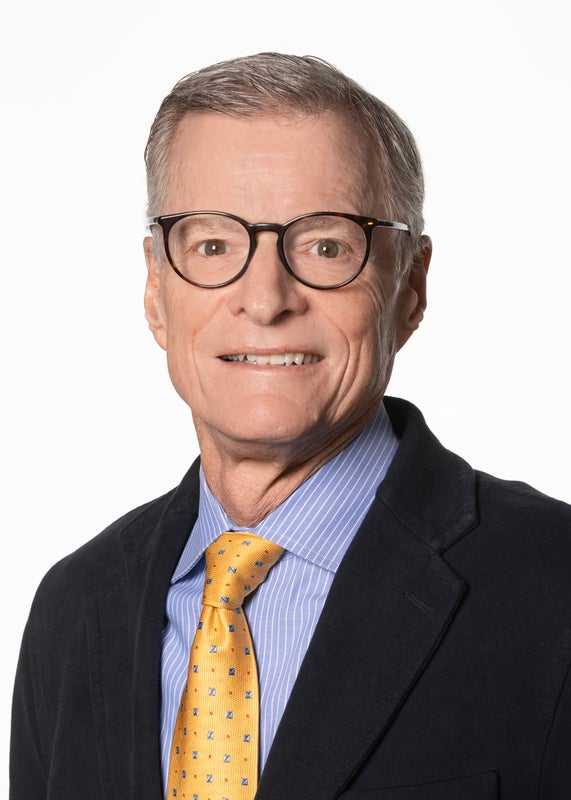 Howard Kilbride, Children’s Mercy Kansas City
Howard Kilbride, Children’s Mercy Kansas City
Howard Kilbride had a plan when he came to Children’s Mercy as a neonatologist. A five-year plan. Then, on to the Next Big Thing. And that, folks, was 40 years ago. A West Coast native, he went to medical school in Seattle, did his pediatric residency and neonatology fellowship in Denver, then fell into the orbit of Robert Hall, the physician credited with establishing Children’s Mercy’s neonatal intensive care program. “Ultimately, I decided to take a position there which offered a busy clinical neonatology practice and opportunity to engage in clinical research,” Kilbride says. The keyword there is “busy.” Over his career, he helped design and transition CM’s neonatal clinical service to a new NICU, then assisted various expansions to 84 beds. Neonatal clinical services more than doubled on his watch, and the number of faculty more than tripled. He also led development of the region’s only Level IV NICU, ranked among the nation’s best. It didn’t take Kilbride long in life to get onto a medical track: “My mother had told me that was my goal from age 4,” he says. As he explored that career, he says, he realized that there were many pathways within medicine—clinical service, yes, but also opportunities to teach, lead and conduct research. “The intensive practice of neonatology as we know it is a relatively new specialty, beginning in the 1960s,” he said, and gaining momentum after the death of President John F. Kennedy’s premature son in 1963. Nearly 12 months of assignments in neonatal care filled a third of his residency, a time he calls both exciting and challenging. “The medical profession was just trying to learn how to provide intensive care for low-birth-weight infants, which was ever-changing, involving new equipment and procedures, many of which had never been done on such small infants, now considered routine care,” he says. “With so much to learn and such possibilities for improvement, it seemed like the logical direction for my career.”